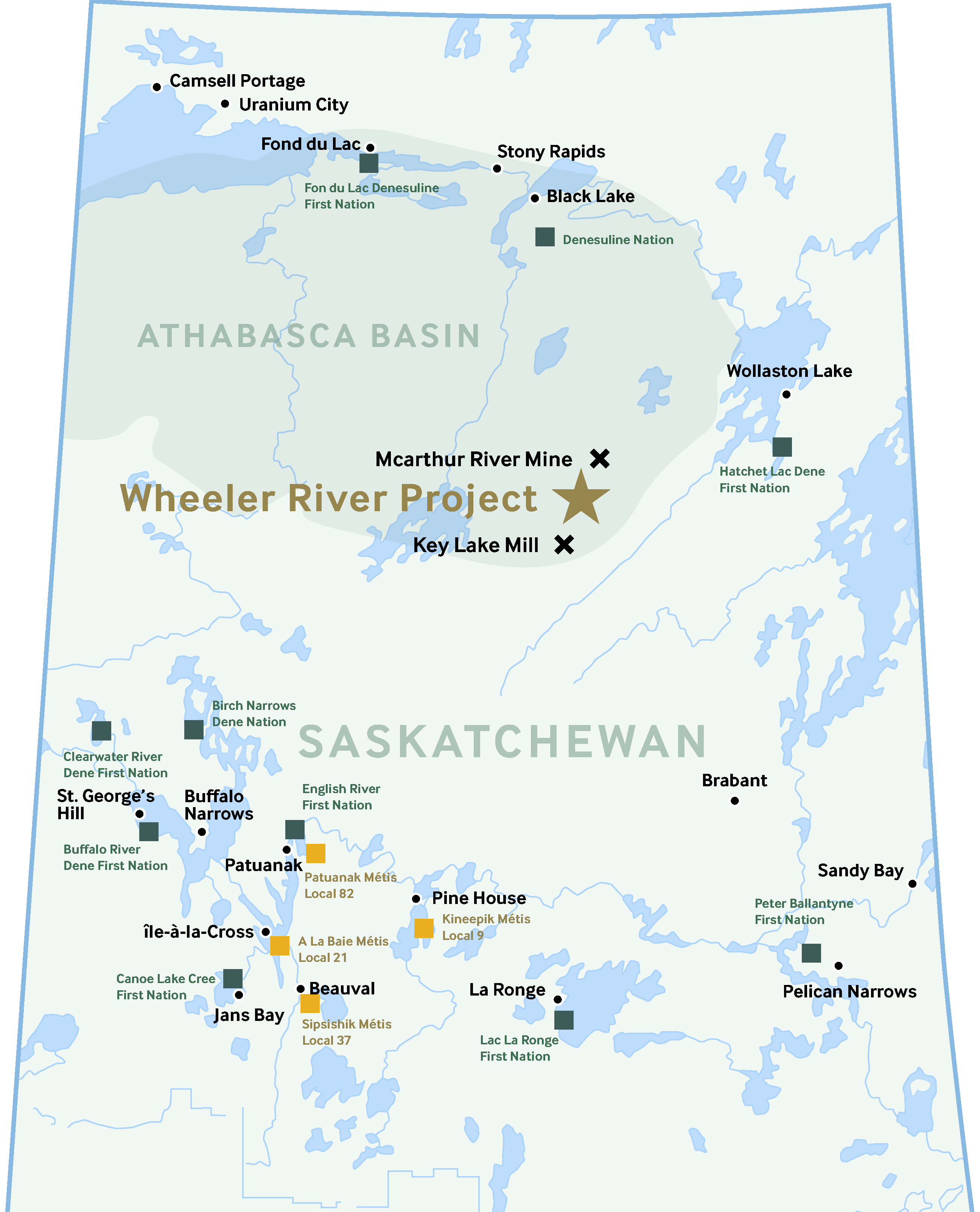See how we’re doing things differently.
The Wheeler River Project
The Wheeler River Project is situated in the eastern portion of the Athabasca Basin region in northern Saskatchewan, and it is the site of a proposed In Situ Recovery (ISR) uranium mining project. It is located 35 km north-northeast of the Key Lake mill and 35 km southwest of the McArther River uranium mine, within the traditional territory of several Indigenous communities. Denison Mines holds an effective 95% ownership and operates the project with a deep commitment to collaboration—working closely with Indigenous groups and local communities to build a legacy of responsible development.

Access all current material associated to the Wheeler River Project’s Federal Environmental Assessment by clicking below.
Drilling down to learn what’s important to your communities.
There is more to our business than just mining uranium. We recognize that we operate in a remote natural setting in northern Saskatchewan that is the traditional territory of multiple Indigenous nations and with multiple northern communities that have an interest in our activities. We strive to lead with responsibility and respect working to bring people and ideas together.
In situ recovery (ISR) mining is widely used outside of Canada, but the Wheeler River Project will mark the first time this method is used at a Canadian uranium mining site. With no conventional tailings, no large waste rock piles, and no open pits or major earthworks, ISR mining is progressive, economical, and environmentally responsible. And when the mining ends? The site will be restored in compliance with high environmental standards.
I’ve seen the future of mining with Denison.
Only it’s here & now.



Frequently asked questions.
Connect with us.
We’re here to continue the conversation—about the Wheeler River Project, our partnerships, and our future together. Reach out anytime.

